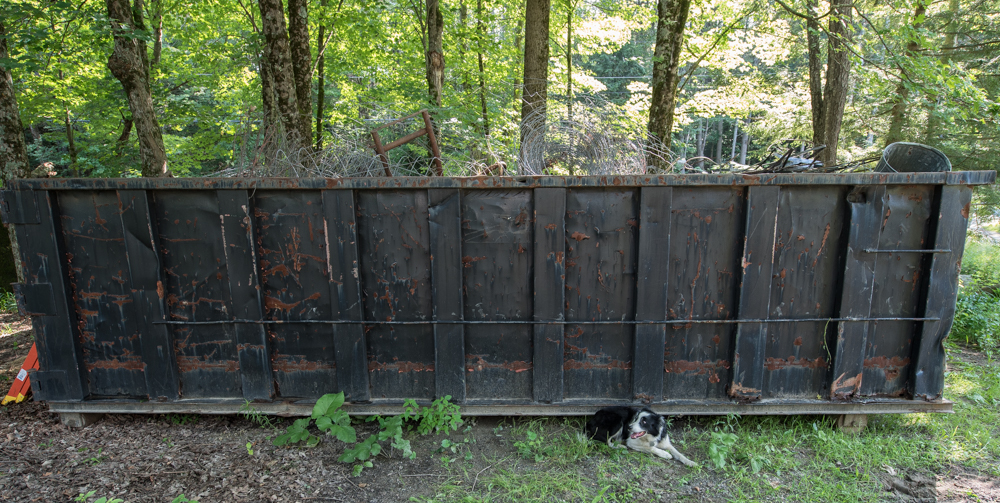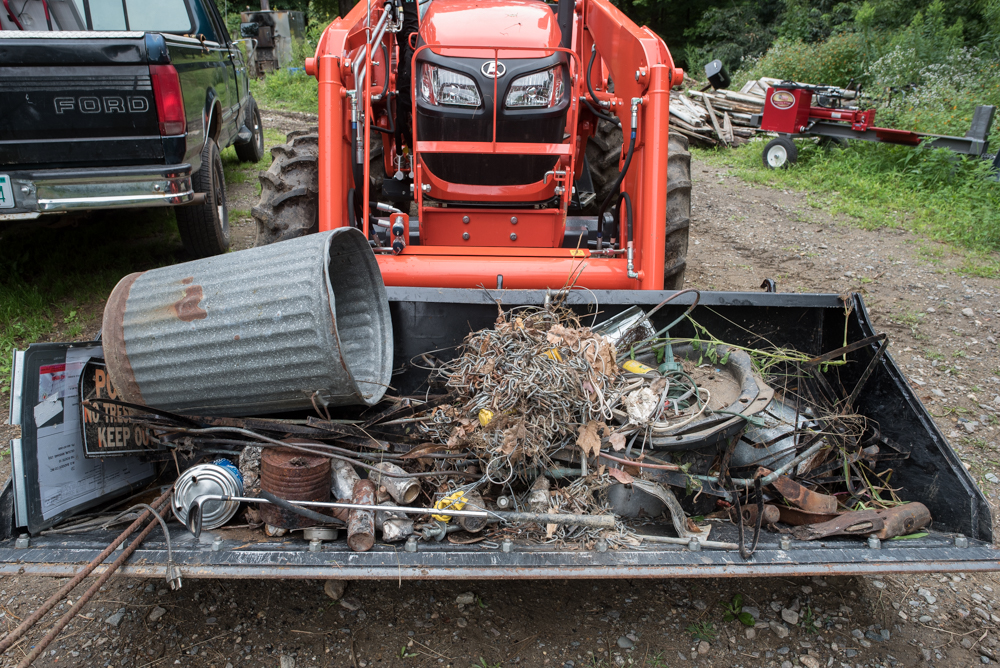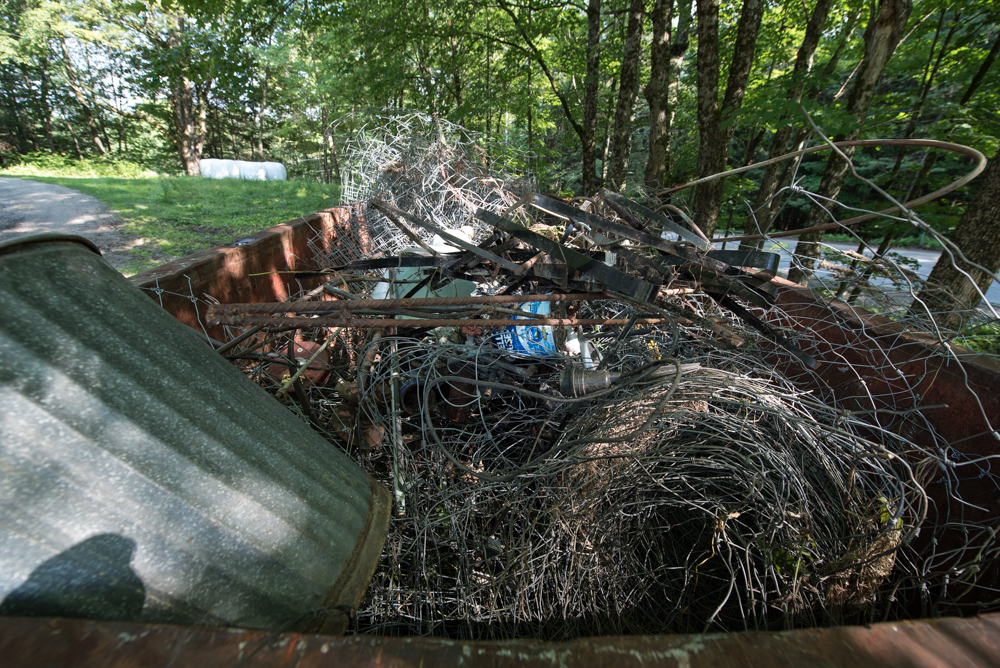My headlamp (required for all nighttime outings) caught this critter’s glowing eye.
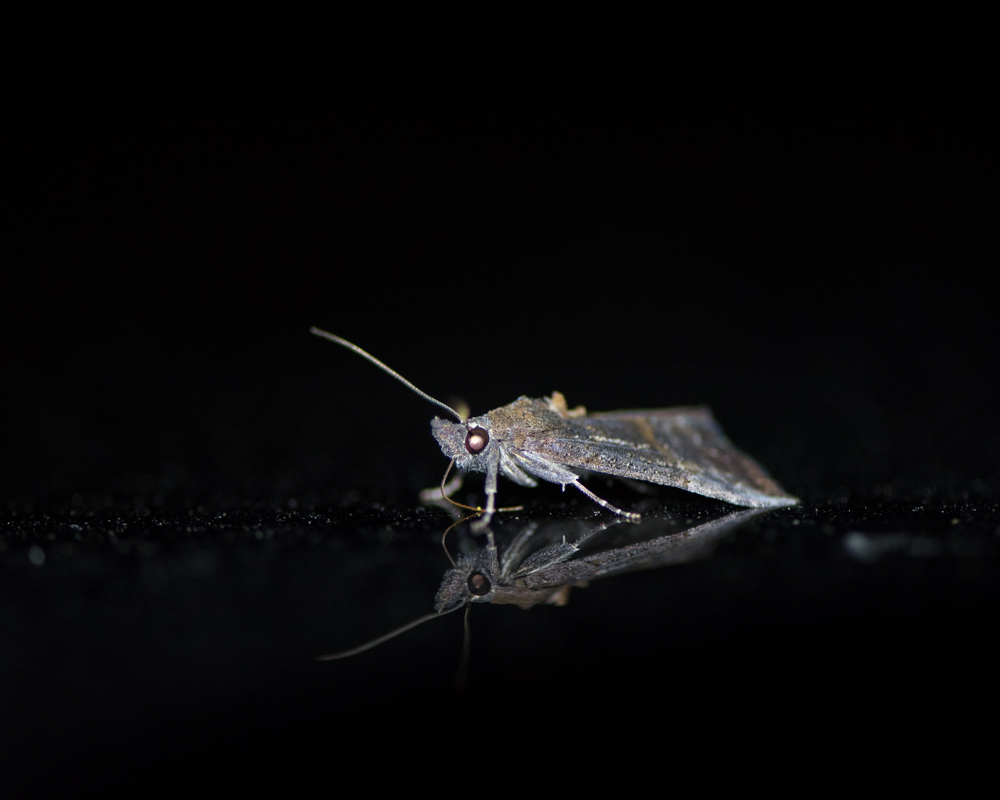
It was repeatedly licking the roof of my car. Is this a sign that I’m due for maintenance?
My headlamp (required for all nighttime outings) caught this critter’s glowing eye.

It was repeatedly licking the roof of my car. Is this a sign that I’m due for maintenance?
I’ve been very excited to be filling the scrap metal dumpster will all manner of leftover things from the farm, but I kept having misgivings about one particular item.

I didn’t really want this old front end assembly collecting leaves on the hillside below the barn, but the more I looked at it, the more I thought it deserved a better fate than becoming a toaster in Shenzen. So today when I ran in to my neighbor Keith Johnson, and expert in old car stuff, I asked him if he’d take a look to see if he could identify the source vehicle and perhaps find an alternate home for it. He was happy to take a look, and he became quite animated when he looked into the dumpster. He said the front end assembly dated to the early 1930s and perhaps came from a Ford Model A. He also thought he could put it to good use, so we lifted it back out of the dumpster, hung it from the bucket of his tractor, and he hauled it home.
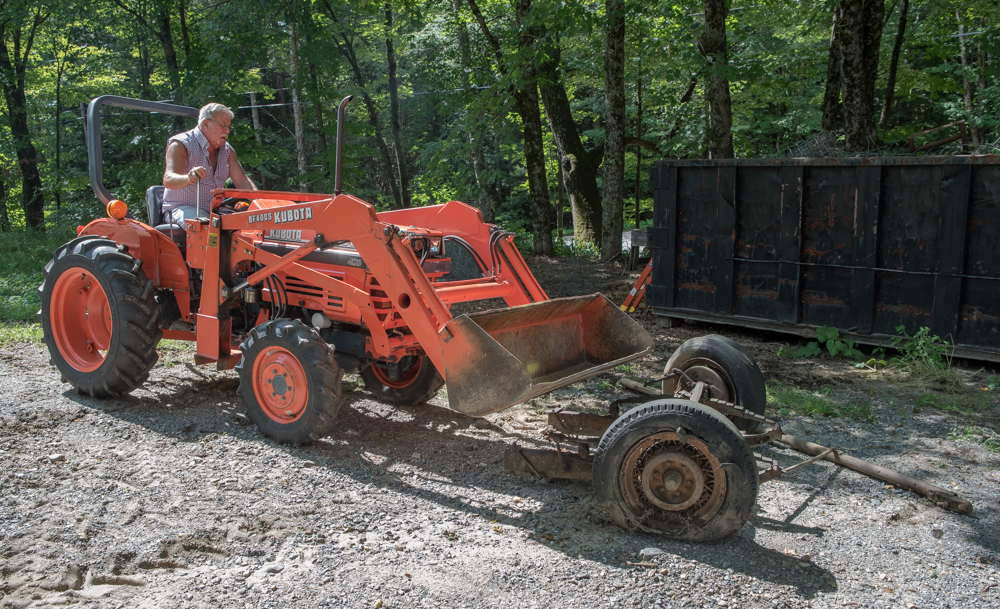
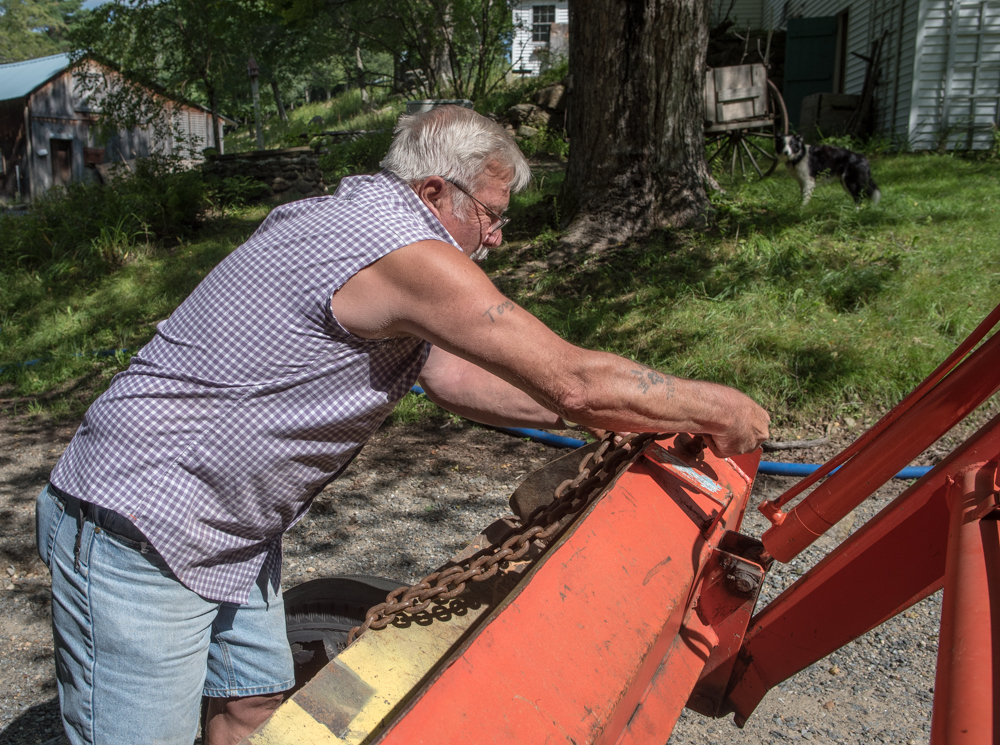
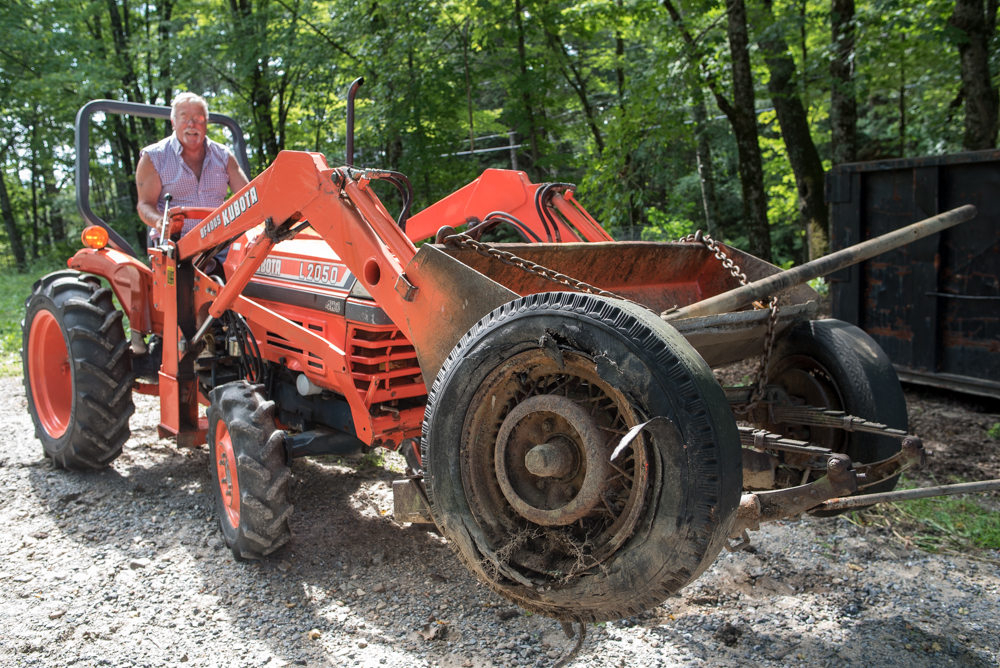
Keith said he has a friend who’s a wizard at identifying old car parts, so he hopes to get me a positive ID soon. In the meantime, the front end of that long-lost car will soon be plying the roads of Sullivan once again.
When I weighed the flock after their off-farm grazing tour, I was disappointed with what seemed like poor performance, but at that point I hadn’t looked carefully enough at the numbers to really understand where things stood. I finally got to spend some quality time with my spreadsheets this morning, and though I’m still figuring out how my flock should perform under ideal circumstances, I think I have a better sense of what the weight data have to say. In order to draw meaningful conclusions, I divided the flock into six groups based on their metabolic circumstances.
Since the flock has been back on my fields, I’ve been trying hard to give them everything they need — grazing them on excellent pasture, and moving them twice a day, well before they’ve exhausted the forage in their grazing section.
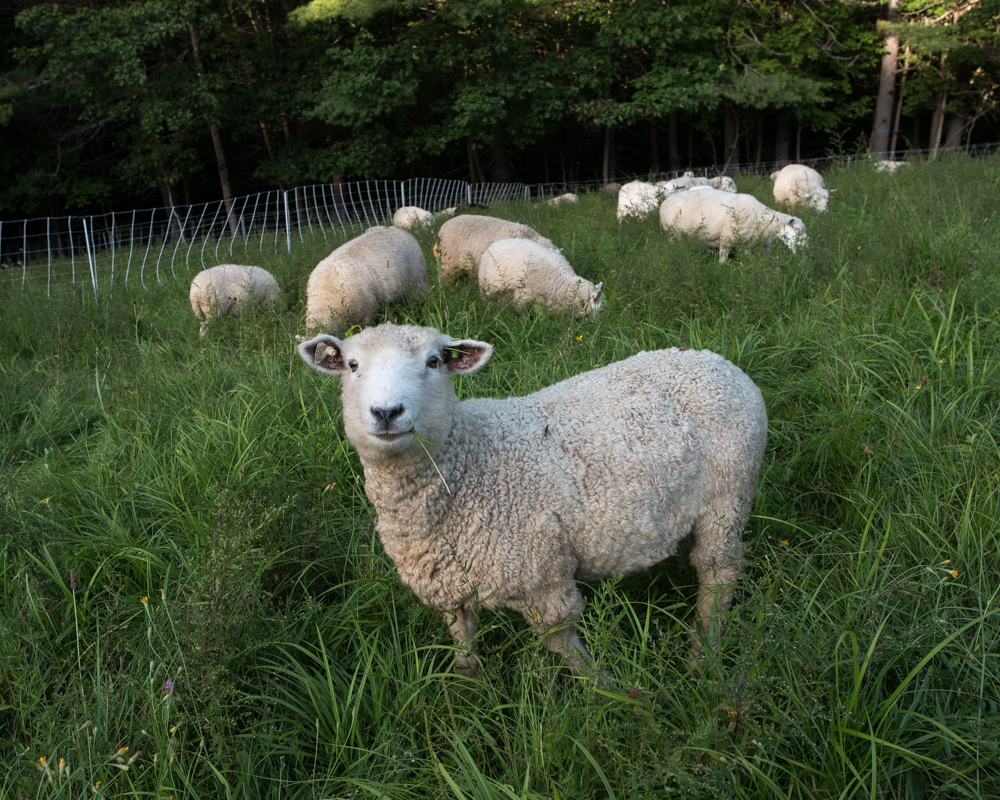
I plan to weigh them again on the 26th, about 3 weeks after they got back here, and I imagine those numbers will be quite instructive. If the sheep more or less continue the trends of the previous 5 weeks, I’d conclude that the off-farm pasture was not limiting them, and if I want more weight gain, I need to breed sheep that are more genetically disposed to efficient use of forage. If instead I see that they’ve done much better since getting back home, I’ll have to conclude that the off-farm pasture was limiting their growth, and I’ll have to figure out how to improve their pasture access next year. To be continued!
Tagged: analysis, data mining, forage quality, geeking out, lambs, pasture, pasture quality, sheep, spreadsheets, weight gain
Boston and Sullivan are only 100 miles apart, but sometimes they seem like different planets. Today was a humid day in Boston that threatened rain but never quite pulled it off. It was raining pretty hard as I was coming up Rt 9 toward the farm this evening, but I was surprised to see that Otter Brook, almost dry this morning, was as full as I’d ever seen it, and it was spilling over the highway near my turnoff. Route 9 was closed and detoured up my street just a few minutes after I got home.
There’s a small stream, Hubbard Brook I believe, that runs at the front of the farm, and this evening it had overtopped as well, spreading across the fields and driveway. Just below the driveway, the brook was more violent than it had been at the height of snowmelt in the spring.

The weather guys say we got something like 3 inches of rain today, so I’m grateful that the driveway survived and the house stayed dry. The sheep were pissed off but fine. I’ll take a better look around tomorrow morning to see if anything got seriously damaged from the floodwaters. Whew.
We’ve gotten to the part of summer when the grass doesn’t grow very fast, so I tend to forget that other things still grow well.
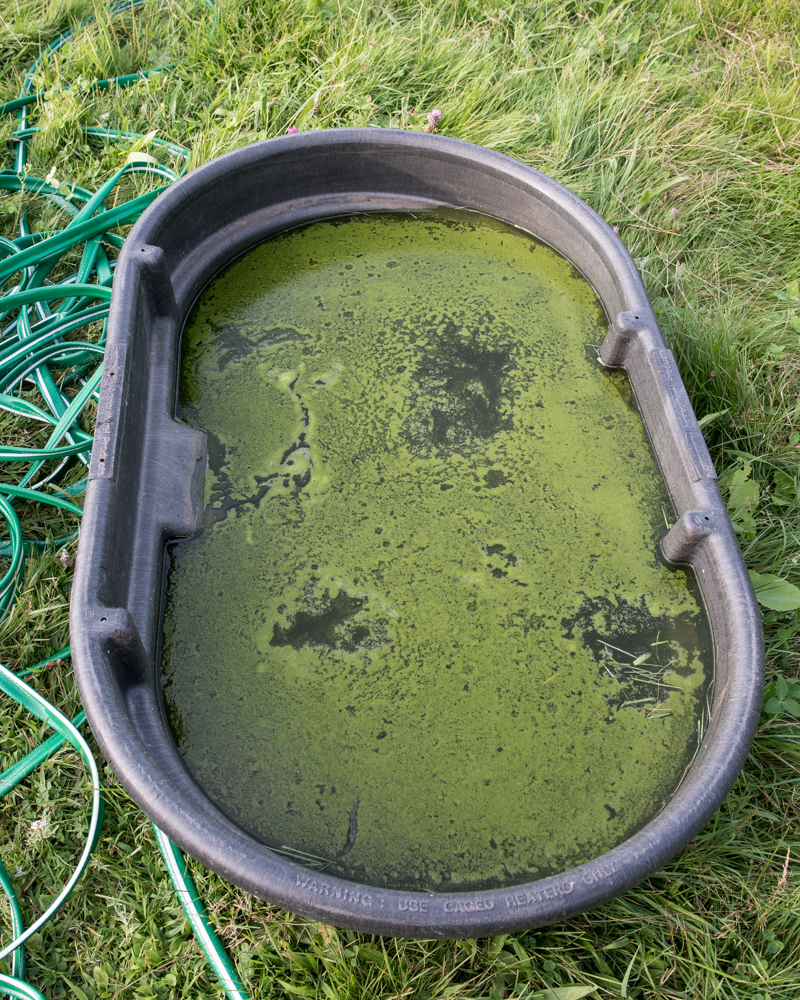
This is the water trough I keep in the training area so that the border collies have a way to cool themselves down when they’re working sheep. Yesterday I noticed a few green filaments on the surface, but I was surprised to see a full-on bloom today. I’m not sure if this is a cyanobacterial or algal in origin, but in either case, a whole lot of photosynthesizing single-celled organisms are doing their thing. And when I looked closer, I realized that their thing is blowing bubbles.

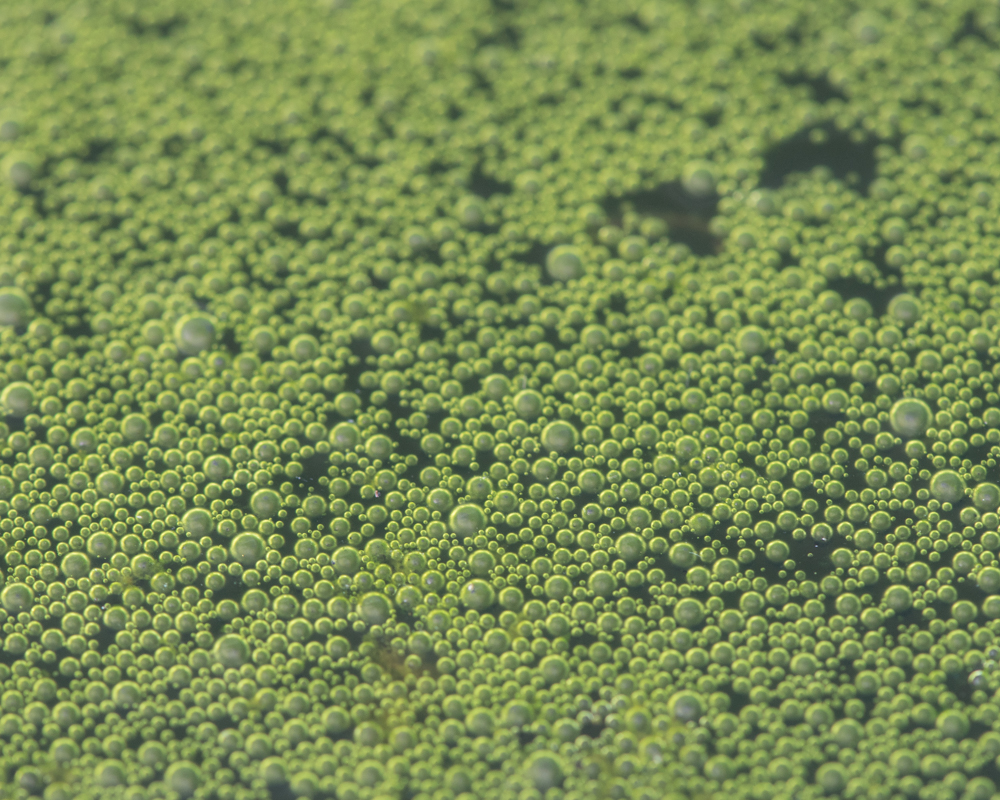
My best understanding of what’s going on is that the critters in the tank, whether algae or cyanobacteria, are producing oxygen as a byproduct of their photosynthesis, and the surface tension is right to trap the bubbles rather than allowing the oxygen to escape into the atmosphere. More intriguingly, I’ve read that cyanobacteria can manipulate the bubble formation to control their buoyancy, and thus manage the amount of sunlight reaching their photosynthetic machinery. For those given to paranoia about sentience in lower life forms, game on.
Tagged: algae, border collies, bubbles, buoyancy regulation, Cass, Chloe, cyanobacteria, green scum, herding, oxygen, photosynthesis, pond scum, stock tank, water trough
Today Simon Gascoyne (Best vet ever, perhaps? He caught the ewe when I failed to…) came out to test the Katahdin ewe #1402 for CL.

He drew a blood sample from her jugular vein and aspirated a bit of creamy goop from her lump. I hope to have results by the end of next week, and in the meantime will hang my hopes on Simon’s instinct that this didn’t feel to him like a case of CL. Caseous lymphadenitis, as the name suggests, localizes in lymph nodes, and he thought the lump was too low on her neck to be associated with a node. Fingers crossed. Bravo, in contrast, was only worried about being left out of the action.
Tagged: 1402, blood draw, bravo, Caseous lymphadenitis, CL, ewe, Katahdin, lump, pasture, Simon Gascoyne, testing
I realized recently that I’m losing my battle with thistle in the pastures. The flowers are a wonderful magnet for pollen-collectors,
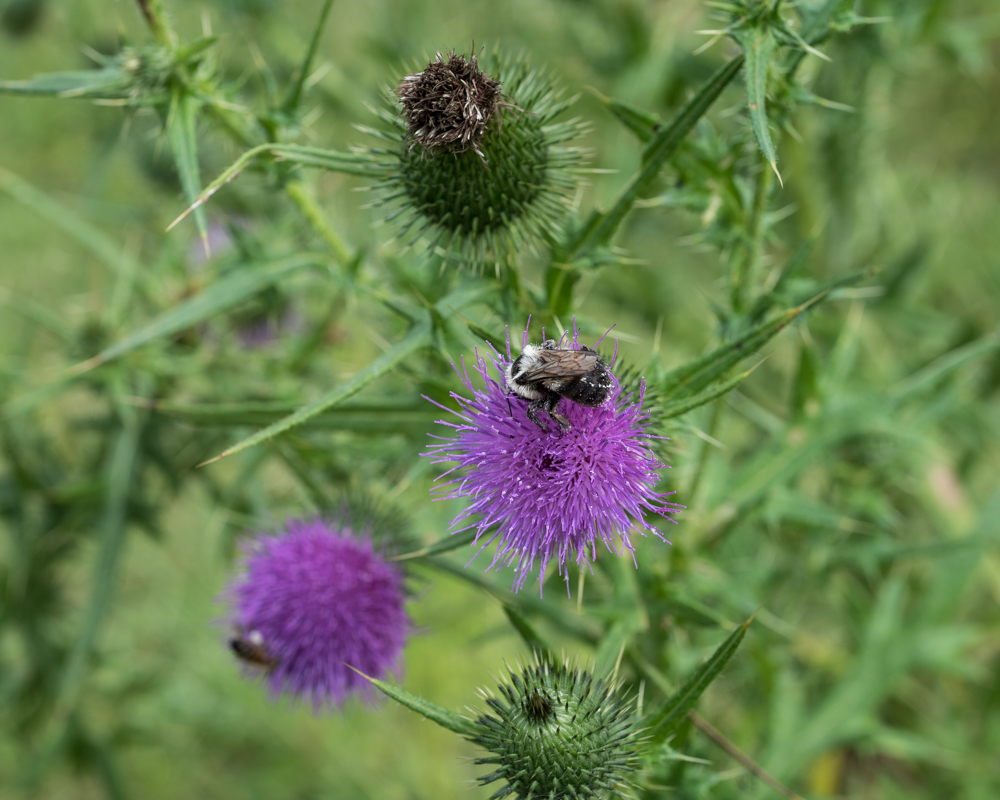

but it’s growing so densely in some spots it’s starting to crowd out the sheep.
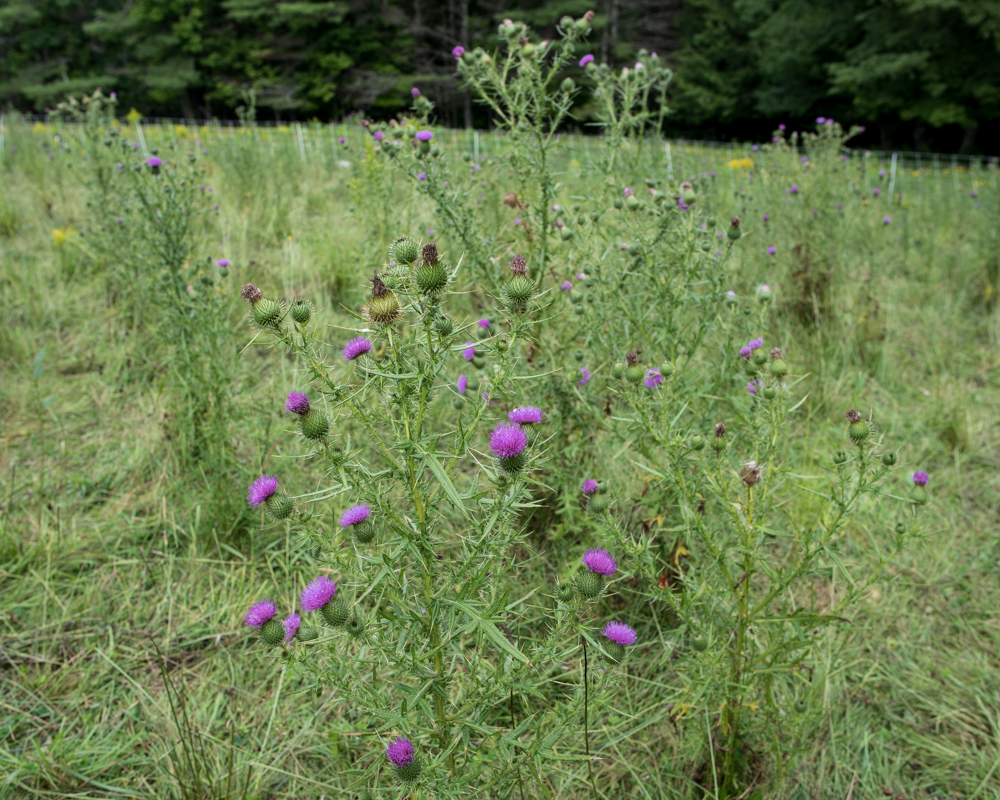
Thistle grows from a taproot, so I had hoped to be able to dig the plants, root and all, out of all the pastures, so they wouldn’t just regrow from the rootstocks next year. And I knew that I had to get this done before the thistle flowers started to go to seed, which would doom me for years to come. Despite help from friends, I wasn’t getting to it all, and now some of the flower heads are starting to set seed.
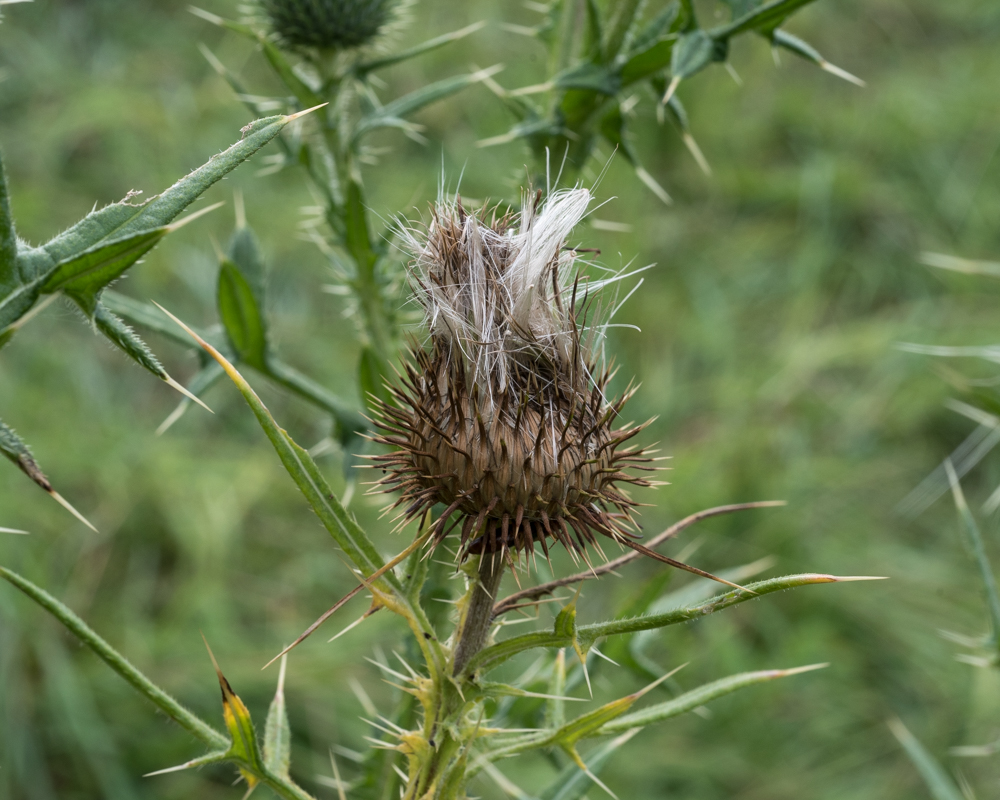
So I’ve abandoned my lofty ambitions of pulling out all of the thistles by their roots, and now I’m just cutting the damn things off at ground level with a brush saw. I fear that every single root I’m leaving will set a new thistle next year, but I’m getting most of the plants before the seeds develop, so hopefully next year’s thistle problem won’t be exponentially worse. And it does feel very satisfying to have clean pastures and a huge pile for the compost heap.
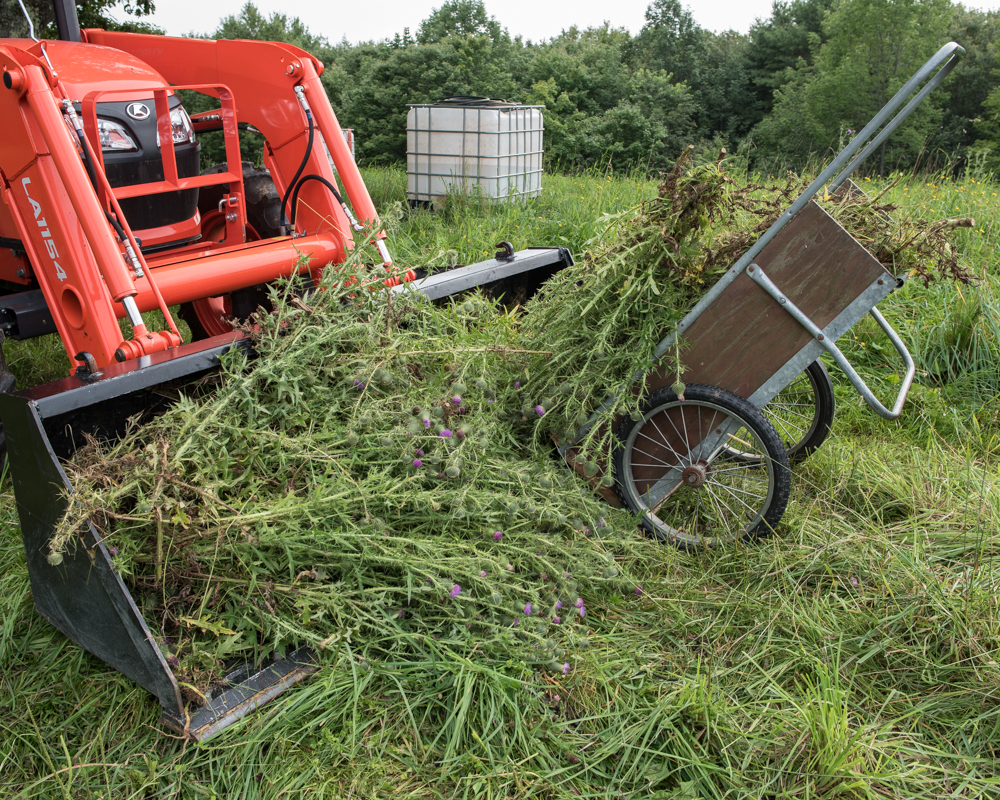

Tagged: brush saw, Chloe, getting shit done, invasion, management, pasture, pollinators, sheep, Thistle, tractor
It’s not clear to me why the Dorsets are so fond of Bravo’s doghouse.

I think they spent more time in a barn in their previous lives than most of my sheep, but maybe they just have clown car envy.
Now that I spend much of my time with sheep, people seem to tell me about all the funny behaviors they’ve heard about and ask me if I’ve experienced them. I’ve disappointed a lot of folks who really want to believe in the sheep with the LEDs (yeah, it’s fake…). So when someone mentioned that sheep sometimes form a scrum with their heads in the center to make shade for themselves, I was duly skeptical; it seemed like a pointless exercise, and natural selection is very unforgiving of pointlessness.
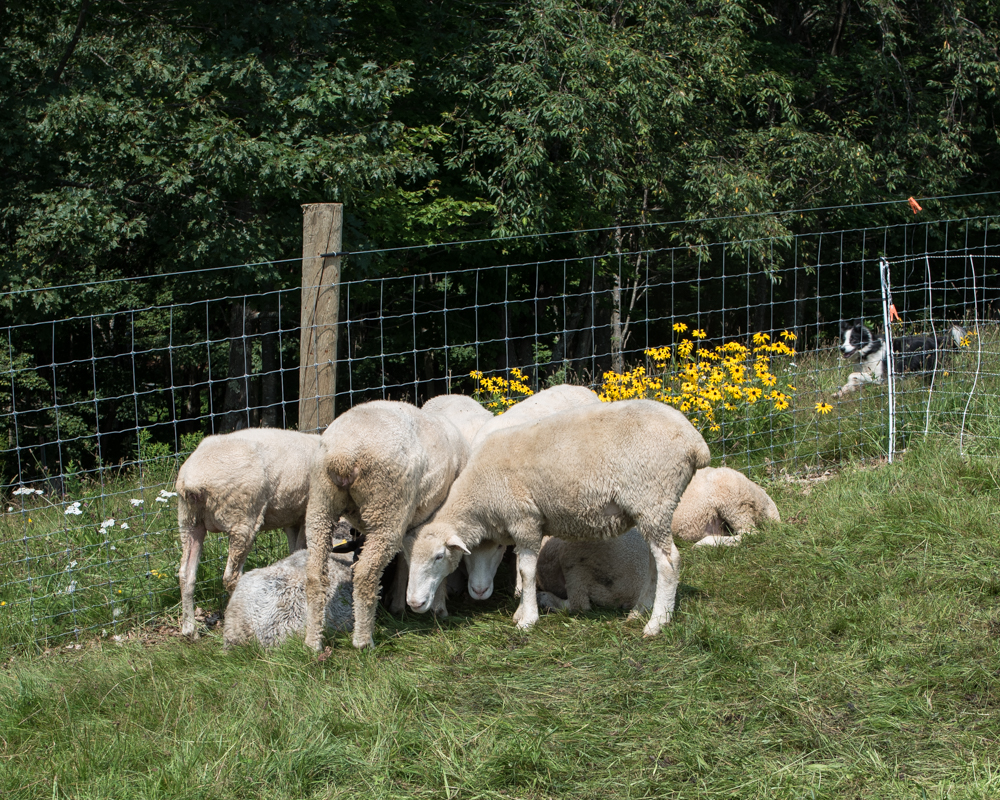
But chalk it up to the circular logic of behavioral evolution: if they do it, it must work. And why does it work? Because they do it. I still maintain that it can’t really be cooler in there with all those sheep breathing on each other, but I guess I wouldn’t know.
Ganesha was smiling on the farm today. I’ve been working at freeing this place from under all the debris left by the previous owners since I moved here last October, and today was a huge step forward. Scrap-It, a metal recycling company near me delivered a 30-yard dumpster last week, and today I finished (thanks so much to Bob Jones for his help!) packing it with all the rusty equipment and misbegotten fencing and other metal treasures that I’ve been harvesting from the fields over the last ten months. I’ll call them on Monday to take it away, and if the metal weighs enough, they might even pay me for it. The only disheartening part is that there’s probably another dumpster’s worth of metal yet to collect.
